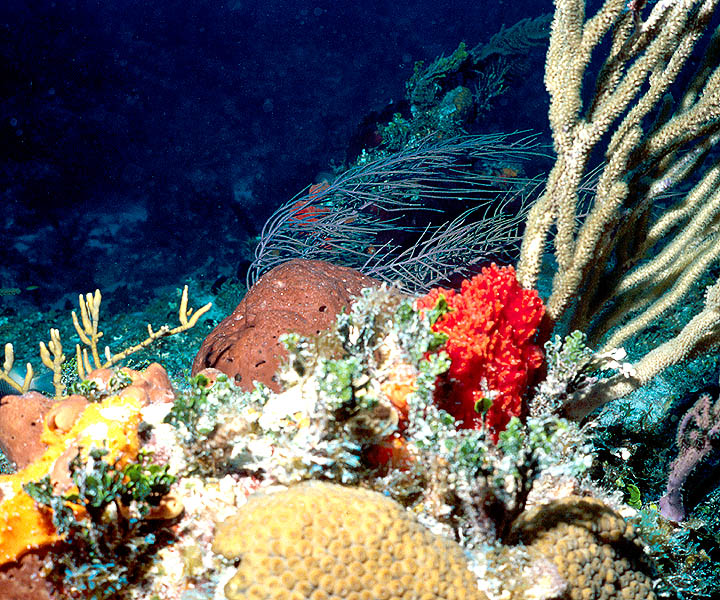
Volume 4 Number 16
The "Forgotten Photos":
Strong Currents near Victory Reef


Volume 4 Number 16
The "Forgotten Photos":
Strong Currents near Victory Reef

This is another of the "forgotten photos" that I found while cleaning my office. This picture shows Victory Reef near Cat Cay in The Bahamas on a day when the ocean currents were unusually strong.
Ocean currents are important for the health of a coral reef. Ocean currents bring food to the corals. Because the corals are stuck to the floor of the ocean, they depend on currents to bring food nearby. Then the coral animals, called polyps, reach out into the current with their tiny tentacles to catch their prey. You can see pictures of coral polyps catching their food on the ReefNews website, at
http://www.reefnews.com/reefnews/photos/corals/softpolp.html
The day we visited Victory Reef, the speed of the current was about 1 knot. That is a pretty fast current for Victory Reef, and it was hard to swim into the current. We had to be careful while diving, not to get swept too far away from out boat.
Soft corals build tall branches of soft skeletons. These soft skeletons are flexible and can bend in the current. This helps keep the branches from breaking on days when the current is strong. Notice the long, thin branches of the Purple Sea Whip Coral in the center of this picture. The branches are almost pushed flat by the current. Even the thick branches of the Brown Warty Sea Rod (on the right) are bent to the right a little by the current.
In the foreground are several other animals. Notice the Brown Sponge and the Red Sponge near the center of the picture. At the bottom of the picture (and out-of-focus because it was so close to the camera) is the bumpy surface of a yellow Star Coral.
Read more about corals on the ReefNews Guide to Corals
http://www.reefnews.com/reefnews/index/corals.html
--------------------
e-ReefNews and embedded illustrations are
Copyright © 2003, ReefNews, Inc.
ReefNews ® is a registered trademark of ReefNews, Inc.